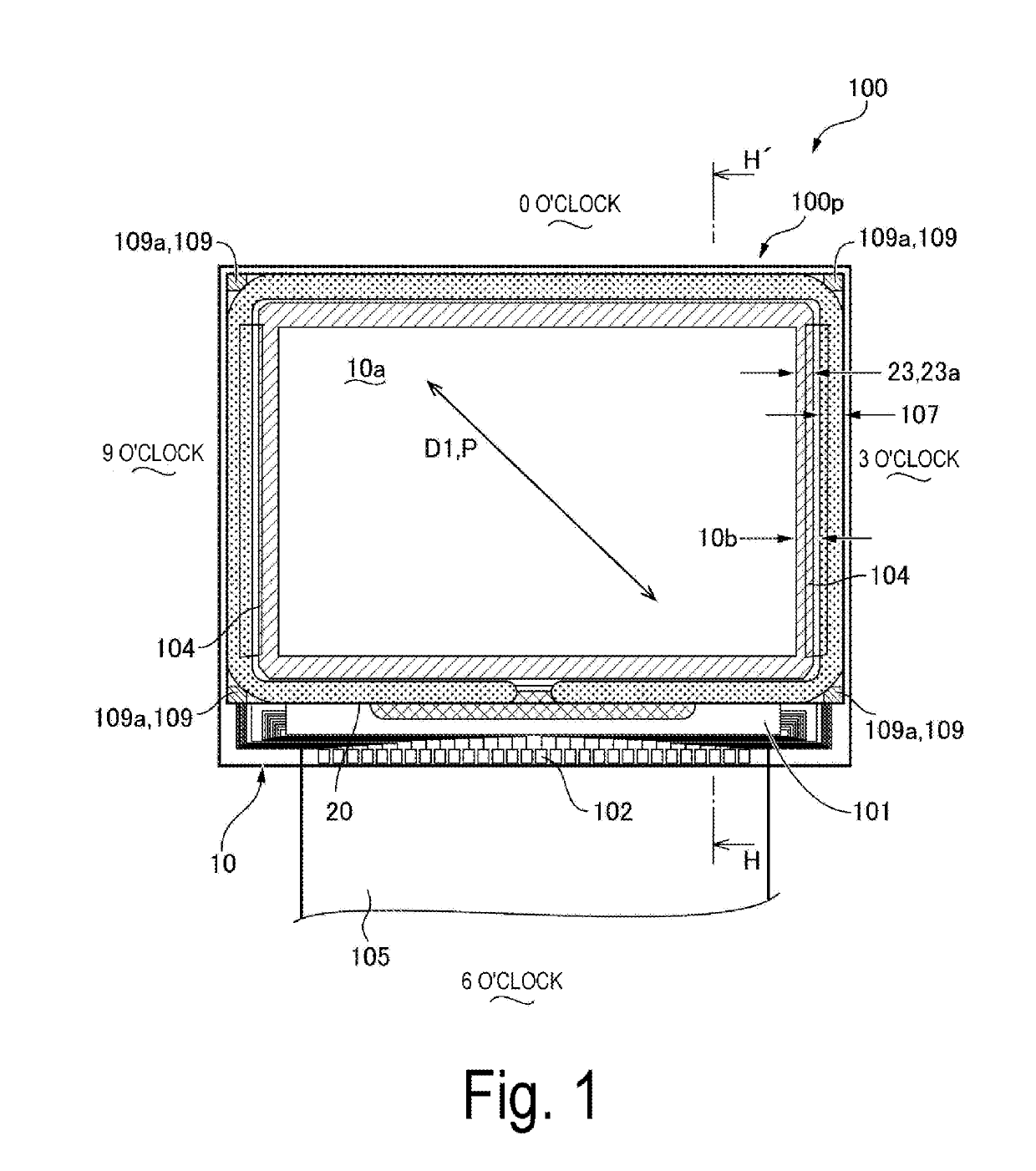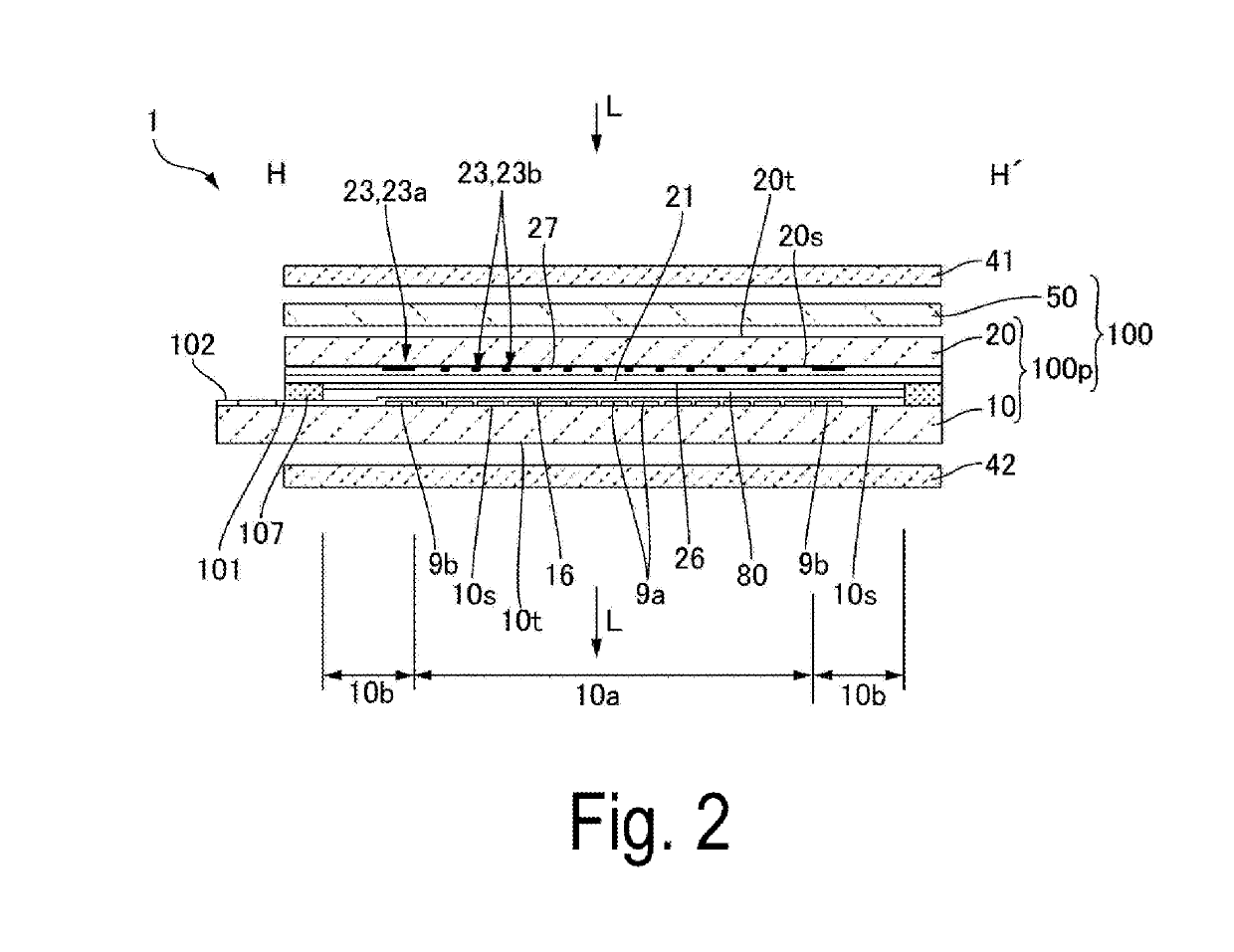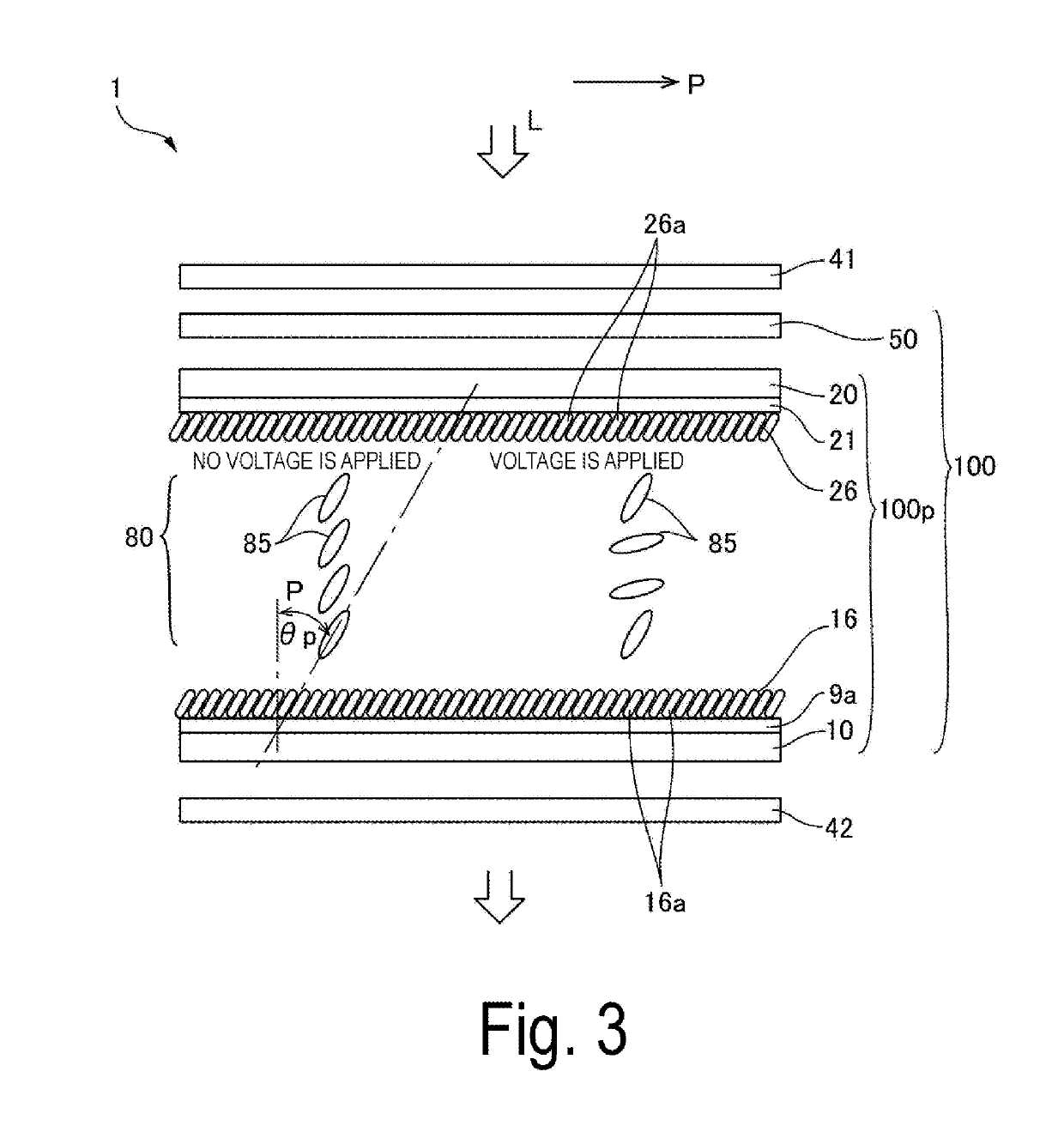Liquid crystal device and electronic apparatus
- Summary
- Abstract
- Description
- Claims
- Application Information
AI Technical Summary
Benefits of technology
Problems solved by technology
Method used
Image
Examples
exemplary embodiment 1
Configuration of Liquid Crystal Device
[0030]FIG. 1 is a plan view illustrating one aspect of a liquid crystal device 100 according to Exemplary Embodiment 1 of the invention. FIG. 1 illustrates a state where the liquid crystal device 100 is viewed from the side of a second substrate 20. FIG. 2 is an H-H′ cross-sectional view of the liquid crystal device 100 illustrated in FIG. 1. Note that, in FIG. 1, a liquid crystal panel 100p alone is illustrated while omitting the illustration of an optical compensation element 50 illustrated in FIG. 2.
[0031]As illustrated in FIG. 1 and FIG. 2, the liquid crystal device 100 includes the liquid crystal panel 100p in which a first substrate 10 having light translucency and the second substrate 20 having light translucency are bonded together with a sealing material 107 creating a predefined gap in between, and the optical compensation element 50. The optical compensation element 50, which also serves as a phase difference compensation element, is ...
exemplary embodiment 2
[0067]FIG. 9 is an explanatory diagram illustrating the image processing circuit 130 (image processing device) of the light modulation apparatus 1 according to Exemplary Embodiment 2 of the invention. FIGS. 10A to 10C are explanatory diagrams illustrating a correction of an applied voltage performed by the image processing circuit illustrated in FIG. 9. FIG. 11 is an explanatory diagram illustrating a detection of a boundary by the image processing circuit 130 illustrated in FIG. 9. Note that the light modulation device 1 of Exemplary Embodiment 1 includes the configuration of the image processing circuit 130 replaced by the aspect illustrated in FIG. 9 in the light modulation device 1 according to Exemplary Embodiment 1. Accordingly, common components are referenced using like numbers, and no descriptions for such components are provided below.
[0068]In Exemplary Embodiment 2, the image processing circuit 130 illustrated in FIG. 9, in a case when a pixel (first pixel) of an applied ...
exemplary embodiment 3
[0077]FIG. 12 is an explanatory diagram illustrating a grayscale voltage and the like of the liquid crystal device 100 according to Exemplary Embodiment 3 of the invention. Although Exemplary Embodiments 1 and 2 employ a normally black mode, the invention may also be applied when a normally white mode is employed. In this case, the grayscale voltage and the like are as illustrated in FIG. 12, where only black and white are interchanged with reference to Exemplary Embodiments 1 and 2. Thus, the corresponding voltages and the like are referenced using like numbers in FIG. 8 and FIG. 11, and no descriptions for such elements are provided below. That is, the optical compensation element is disposed such that, in the light intensity-voltage characteristic, the intensity of the light emitted from the liquid crystal element is maximized with an applied voltage Vwt corresponding to a point belonging to an area having a large change in inclination of a tangent line disposed between two areas...
PUM
 Login to View More
Login to View More Abstract
Description
Claims
Application Information
 Login to View More
Login to View More - R&D
- Intellectual Property
- Life Sciences
- Materials
- Tech Scout
- Unparalleled Data Quality
- Higher Quality Content
- 60% Fewer Hallucinations
Browse by: Latest US Patents, China's latest patents, Technical Efficacy Thesaurus, Application Domain, Technology Topic, Popular Technical Reports.
© 2025 PatSnap. All rights reserved.Legal|Privacy policy|Modern Slavery Act Transparency Statement|Sitemap|About US| Contact US: help@patsnap.com



